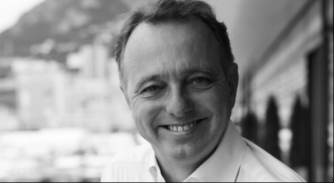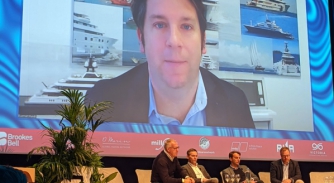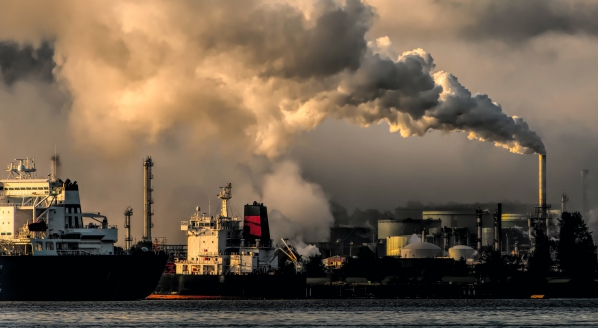The birth of the real-life YETI
How Bram Jongepier’s 3am brainwave triggered serious progress towards more environmentally friendly yachting.…
As the YETI (Yacht Environmental Transparency Index) project continues to grow, and on the eve of Water Revolution Foundation heading to YARE and the Superyacht Forum Live - Captains Edition 2022, this is an opportune time to revisit YETI's origins. This guest article is by Bram Jongepier, chair of the Yacht Environmental Transparency Index project, and first appeared in The Superyacht Owner Report.
It started with a Christmas card in 2018 that I’d sent to my peers in the yachting industry with the request to help me find the YETI: the Yacht Environmental Transparency Index. I received very enthusiastic reactions so we hosted a meeting in March 2019 at our Feadship-De Voogt offices to discuss this idea, and this resulted in exciting progress and significant milestones over the past two years.
At this meeting, I shared the challenges I face as a designer to showcase to our clients how much better a new concept design we had created would be compared to the status quo. Great concepts mostly end up being judged by their economic cost alone, and unfortunately, there was no reference for the ecological side that could indicate the benefits versus costs and as such to make a more informed decision. The yachting sector didn’t have a standardised way of comparing yachts on their environmental credentials. The invited industry peers faced the same challenges.
My brainwave at 3 am one night in November 2018 turned into an official Joint Industry Project through the new collaborative platform Water Revolution Foundation.
 Bram Jongepier, chair of the Yacht Environmental Transparency Index project
Bram Jongepier, chair of the Yacht Environmental Transparency Index project
The way forward
No less than 11 leading yacht builders, four renowned naval architecture firms, a large refit yard and three Dutch knowledge and research institutes signed up to take on this challenge. The group represents more than 40 per cent of the market share and I’m very proud to be the initiator and chair of this project. We all understand that if we don’t do this, IMO will wake up one day and force the general IMO EEDI system upon yachts. Obviously, then it will be too late to propose an alternative for yachts. This project is to develop a scientific, sound and robust tool on which we subsequently can base a new competitive arena to deliver the environmental friendliest yacht.
Transparency
Ambitiously, we ‘set sail’ to develop a rating system that was ultimately able to reward clients, designers and shipyards for the efforts put into the project and choices made to make a better yacht. A yacht that provides the same (or an even better) experience to clients by using fewer resources. The tool needed to also showcase why a yacht is better. The T in YETI stands for transparency, a vital aspect and highly valued throughout the YETI development. Reduced environmental impact can be achieved through good naval architecture, system energy savings or additional technical features in the power-supply system.
Scope YETI 1.0
YETI is based on the Life Cycle Assessment (LCA) methodology which includes the build, operation and end-of-life/refit. The scope of YETI 1.0 is focusing on the operational phase of the yachts and more specifically on the energy they use. This is split up into energy for propulsion and hotel function. By combining all yachts in one scope, we can truly compare them with one another on their environmental credentials. This means full- and semi-displacement yachts, fast yachts and sailing yachts, with most common powering systems such as diesel direct, diesel electric and hybrids.
Each yacht is unique … but their use is similar
There are very big differences in size, type and execution in yachting, so the method needed to be inclusive, while also being sensitive to unique characteristics. From the outset, YETI had to be realistic. Our task was to develop an average operational profile that reflects the reality of current superyacht use.
A large quantity of AIS data (automatic identification system, compulsory on all large yachts) was analysed. Out of almost 300 years of operational data from 109 yachts, a standardised, parametric operational profile was determined with time and speed distribution, where speed was found to be related to waterline length. Yes, there are exceptions, but on average yachts tend to spend little time at speed (only 10 per cent) and most of their time in harbour (56 per cent) and at anchor (34 per cent). The use of an operational profile is the main difference from the EEDI approach, developed for ships by IMO, which looks only at a single sailing condition.
Hotel function, however, is always on, also when in harbour with no guests on board. Yachts connect to shore power or run on generators. The shore power supply has been counted for by taking into account the average energy grid in popular yacht marinas. You’ll see that we haven’t left any stone unturned and have created a very sound YETI methodology.
Existing fleet
What about your current yacht? YETI does not only focus on new builds. In fact, we have a collective responsibility for the existing fleet of yachts. The same YETI approach works for comparing existing yachts to the fleet benchmark to determine their YETI score. Water Revolution Foundation aims to provide concrete solutions for yachts to be upgraded through refit should their owners wish to do so.
We can only do it right and together
I hope our YETI development inspires you and that it proves our industry is working together to seriously progress towards environmentally friendlier yachting. We all feel a pressing need to make sure future owners of superyachts can still have fun without having an unsustainable impact on our environment.
As I write this column, the YETI group is conducting the fleet review to test the YETI 1.0 calculator – an incredible milestone. Still, much work needs to be done before we launch in November at The Superyacht Forum in Amsterdam. You’re most welcome to include your yacht in our YETI test fleet.
I want to thank Feadship for granting me the significant time to put into the YETI project and, of course, my fellow YETI developers at Abeking & Rasmussen, Baglietto, Benetti, Damen Yachting, De Voogt Naval Architects, Delft University of Technology, Dykstra Naval Architects, Fincantieri Yachts, Heesen Yachts, Lateral, Lürssen Yachts, MARIN, MB92, Oceanco, Royal Huisman, Sanlorenzo, TNO and Vitruvius. Together, we’ve put the YETI in the world, and I can’t wait to see it grow up!
This article first appeared in The Superyacht Owner Report. To gain access to The Superyacht Group’s full suite of content, publications, events and services, click here to join The Superyacht Group Community and become one of our members.
As part of the ongoing strategy for 2022, WRF is heading to YARE and The Superyacht Forum Live - Captains Edition 2022, to speak with the core group of captains in attendance, from 16-18th March 2022. For those in attendance, it represents a fascinating opportunity to speak directly with the team from WRF about how each vessel, and its crew, can actively participate in the development of a system that may define the sustainable future of the superyacht sector.
Profile links
NEW: Sign up for SuperyachtNewsweek!
Get the latest weekly news, in-depth reports, intelligence, and strategic insights, delivered directly from The Superyacht Group's editors and market analysts.
Stay at the forefront of the superyacht industry with SuperyachtNewsweek
Click here to become part of The Superyacht Group community, and join us in our mission to make this industry accessible to all, and prosperous for the long-term. We are offering access to the superyacht industry’s most comprehensive and longstanding archive of business-critical information, as well as a comprehensive, real-time superyacht fleet database, for just £10 per month, because we are One Industry with One Mission. Sign up here.
Related news

We’ve got to embrace sustainable refits
The measures owners can take on their own vessels in the race to cut greenhouse gas emissions
Owner

Superyacht 2030: How much energy can we save?
The panel begin the final day of TSF with a discussion on energy saving techniques
Business

Greener yachts and shipping: a look over the horizon
IRI's Marc Verburg on a shifting regulatory landscape and the growing environmentalist imperative
Business

10 steps to IMO compliance and beyond
Cyberprism’s group technical director, Keith Chappell, outlines why prudent cyber risk management is an act of maturity, while avoiding a race to the bott
Technology
Related news
We’ve got to embrace sustainable refits
3 years ago
Superyacht 2030: How much energy can we save?
3 years ago
10 steps to IMO compliance and beyond
4 years ago
NEW: Sign up for
SuperyachtNewsweek!
Get the latest weekly news, in-depth reports, intelligence, and strategic insights, delivered directly from The Superyacht Group's editors and market analysts.
Stay at the forefront of the superyacht industry with SuperyachtNewsweek




